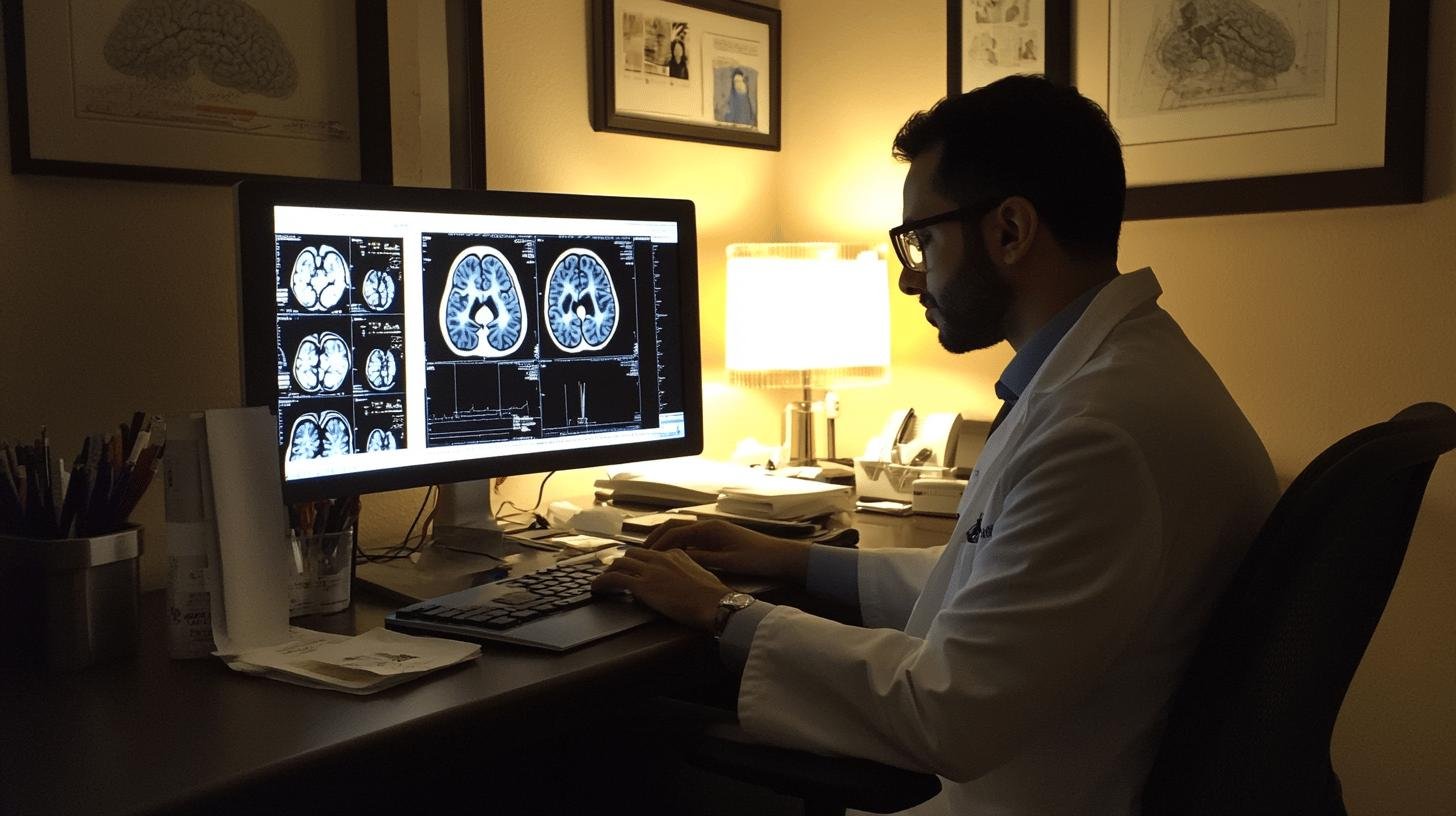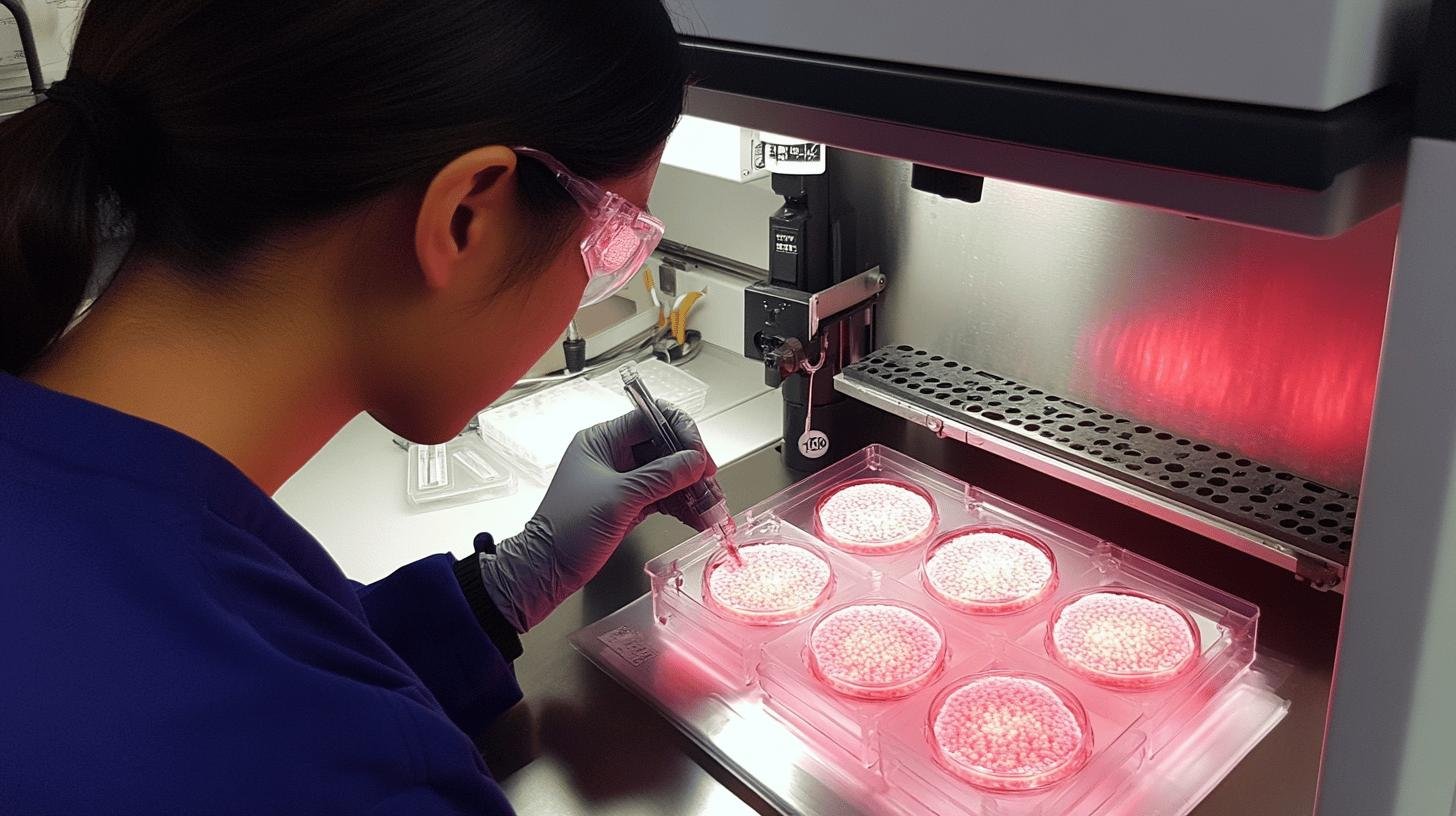TL;DR:
- Neurological diseases are complex due to the brain’s intricate structure and systems:
- Neurons form a vast network.
- Myelin sheath insulates nerves.
- Blood-brain barrier restricts drug delivery.
- Slow nerve regeneration complicates recovery.
- Diagnostic challenges arise from symptom overlap among disorders.
- Key diagnostic tools: EMG, nerve conduction studies, MRI, genomic testing.
- Research barriers:
- Blood-brain barrier obstructs effective treatment delivery.
- Lack of biomarkers hampers early diagnosis.
- Advances in research include 3D organoids for targeted therapies.
- Direct Primary Care (DPC) offers personalized, continuous support for better management of neurological disorders.
Ever wondered why curing neurological diseases feels like reaching for the stars? It’s all about the mind-boggling complexity of our brains. These aren’t just any organ—they’re like intricate webs of neurons and networks where every single connection matters. So why are neurological diseases hard to cure? Toss in the blood-brain barrier, a bouncer of sorts, keeping drugs out like they’re at a pop concert, and you see why treatment is so tricky. We’re diving into why these diseases are hard nuts to crack and how the elaborate puzzle of brain function plays a starring role. Let’s unravel this mystery together!
Understanding the Complexity of Neurological Diseases
Why are neurological diseases so challenging to cure? It all boils down to the brain’s intricate structure. The nervous system is incredibly complex, consisting of countless neurons and connections. Each neuron works like a tiny processor, relaying signals through a vast network similar to a supercomputer.
Additionally, the myelin sheath acts as insulation around nerves, ensuring signals remain strong and secure. Then there’s the blood-brain barrier—it’s like the ultimate bouncer, allowing only certain substances to pass through to safeguard the brain. This barrier makes delivering treatments quite challenging. Moreover, nerves regenerate at a languid pace, complicating recovery further. Each of these elements interacts on a microscopic level, making the nervous system a tough puzzle to solve.
Here’s a quick overview of the key components:
- Neurons and their networks
- Myelin sheath and its protective role
- Blood-brain barrier
- Slow nerve regeneration
- Cellular interactions
So why is treatment development such a big deal? These complexities mean that creating effective treatments is like solving a billion-piece puzzle. The blood-brain barrier complicates drug delivery, while slow nerve regeneration makes healing lengthy. Due to these factors, researchers face significant challenges in finding cures for neurological diseases. However, we move one step closer to deciphering the code with each discovery.
Challenges in Diagnosing Neurological Disorders

Why is diagnosing neurological disorders so tricky? Let’s break it down. Accurate diagnosis is crucial because it lays the foundation for treatment. However, the brain and nervous system’s complexity makes pinpointing problems difficult.
Incorrect diagnosis can lead to ineffective treatments or worsen conditions. Doctors rely on various tools and techniques to assess the situation accurately. Here’s a look at some key diagnostic tools:
- Electromyography (EMG)
- Nerve conduction studies
- Imaging technologies (MRI, CT)
- Genomic testing
- Phage display techniques
- Case studies
Early diagnosis holds immense importance. Spotting a disorder early can significantly impact treatment outcomes, slowing disease progression and enhancing quality of life. However, early detection often proves challenging, as symptoms can be subtle or mimic other conditions. For example, early signs of multiple sclerosis can resemble fatigue or general weakness—feelings we all experience occasionally.
Moreover, many neurological disorders share similar symptoms, making diagnosis even trickier. Imagine determining whether a headache is just a headache, or it indicates something more serious, like a brain tumor. It’s akin to finding a needle in a haystack. This symptom overlap necessitates extensive detective work by doctors, utilizing advanced tests to piece together the diagnostic puzzle.
Barriers to Neurological Disease Research and Treatment
Why is the blood-brain barrier so significant in treating neurological diseases? It serves as a security gate, restricting drug access to the brain. While effectively blocking harmful substances, it poses a challenge for delivering therapeutic agents. Imagine trying to sneak medicine past a strict bouncer! Treatments must reach the brain to treat conditions effectively, yet this barrier often denies entry. Consequently, researchers must devise creative solutions to circumvent it.
| Challenge | Impact |
|---|---|
| Blood-brain barrier | Prevents drug delivery to the brain |
| Multifactorial disease causes | Difficult to target treatments |
| Lack of effective biomarkers | Hampers early diagnosis and monitoring |
How do these barriers affect treatment development? They make finding effective cures more complicated. Neurodegenerative diseases lack a single cause; genes, environment, and lifestyle all play a role in this complex tale. Identifying a single treatment target becomes difficult. Moreover, without effective biomarkers, diagnosing and tracking these diseases is challenging. These hurdles make treatment development a lengthy journey, delaying potential cures.
Innovations and Advances in Neurological Research

Why is research so vital in combating neurological diseases? It’s the key to unraveling complex brain puzzles. By delving into cellular mechanics, researchers are unlocking the mysteries of neurological disorders. Understanding these intricacies is essential to overcoming barriers, like the blood-brain barrier that impedes drug delivery. Without research, developing a successful cure would be like shooting in the dark.
So, what’s new in neurological research? Technologies like 3D organoids and cell culture techniques are at the forefront. These mini-brains, grown in labs, provide insight into disease progression. Scientists use specific cell types—like astrocytes, dopaminergic neurons, and microglia—to simulate real brain environments. This allows them to observe cell interactions and responses to potential treatments. It’s like having front-row seats to the brain’s intricate performance.
How might these innovations transform the field? They could lead to targeted therapies. With a deeper understanding of disease mechanisms, treatments can be precisely tailored, resulting in fewer side effects and more effective outcomes. As advancements continue, the path to curing neurological diseases becomes clearer, offering hope to those affected.
The Role of Direct Primary Care in Managing Neurological Disorders
Traditional healthcare systems often leave neurological patients navigating a maze of appointments, referrals, and insurance challenges. This can be frustrating, especially for chronic conditions requiring consistent, personalized care. Patients may feel lost, with limited time to discuss concerns or develop comprehensive care plans. Focus often shifts to treating symptoms rather than understanding the individual, creating care gaps that affect outcomes and quality of life.
This is where Direct Primary Care (DPC) steps in with its benefits:
- Personalized care plans
- Continuous support
- Improved access to healthcare professionals
- Focus on patient education
DPC enhances the patient experience with affordable and personalized healthcare. Patients benefit from more extended visits and stronger relationships with doctors, allowing for tailored treatment strategies that consider the whole person, not just symptoms. This model promotes proactive management of neurological disorders, emphasizing education and support, greatly improving quality of life. Plus, with insurance out of the equation, patients enjoy clearer communication and a more straightforward path to care.
Final Words
Tackling the complexity of neurological diseases is no walk in the park. We’ve explored how the intricate workings of the brain and nervous system make curing these conditions super challenging.
Add in the diagnostic struggles with symptom overlaps, and it’s clear why pinpointing these diseases is a tough gig. Research is also battling against hurdles like the blood-brain barrier and the multifactorial nature of these disorders.
But things aren’t all doom and gloom! Cutting-edge research techniques and the direct primary care approach show promise in making life easier for patients. Understanding why neurological diseases are hard to cure is a first step in carving out new paths for progress.
FAQ
What are the common symptoms of neurodegenerative diseases?
The symptoms of neurodegenerative diseases often include memory loss, difficulty with motor skills, changes in behavior, and cognitive decline. These symptoms can be progressive and vary in intensity.
Can neurological disorders be cured?
Due to the complex structure of the nervous system, neurological disorders are often tough to cure. Current treatments focus more on managing symptoms and improving quality of life rather than complete cures.
Why is it difficult to treat neurodegenerative diseases?
Neurodegenerative diseases are tough to treat because of the brain’s complex structure, slow nerve regeneration, and protective mechanisms like the blood-brain barrier that restrict drug delivery. These factors complicate treatment development.
What are the top neurodegenerative disorders?
The top neurodegenerative disorders include Alzheimer’s disease, Parkinson’s disease, Huntington’s disease, ALS (amyotrophic lateral sclerosis), and multiple sclerosis. These conditions significantly affect brain function and nervous system health.
Is life expectancy affected by degenerative nerve diseases?
Yes, life expectancy can be affected by degenerative nerve diseases, varying greatly depending on the specific condition and its progression. Some may have a slow progression, while others are more rapid.
What treatments are available for neurodegenerative disease?
Treatments for neurodegenerative diseases focus on medications, therapy, and lifestyle modifications to manage symptoms and improve quality of life. Research is ongoing to find more effective therapies.
Why are neurological diseases challenging to diagnose?
Neurological diseases are challenging to diagnose due to symptom overlap with other conditions and the need for specialized diagnostic tools like EMG, nerve conduction studies, and advanced imaging technologies.
How does Direct Primary Care assist in managing neurological disorders?
Direct Primary Care aids by offering personalized care plans, continuous support, and improved access to healthcare professionals. This approach helps patients manage chronic symptoms more effectively and improve their quality of life.

